NBF partnered with Kelton Global to conduct a survey of over 1,000 American workers. We examined how people feel about their work from home workspaces and what they need to make their days better and brighter using a combination of finding the right furniture, designing a beautiful workspace, and building behaviors that can create long-lasting workplace wellness.
Make the Most out of Makeshift Spaces
In today's world of small-space living and full households, it isn't the norm to have a dedicated home office. Especially for those who aren't planning on working remote for the long-haul, it's likely that your workspace is doing double-duty at least part-time.
Not all "make it work" workspaces are created equal. As you find the perfect place for your WFH home base, consider the way that your physical area maay impact your working hours.
Sharing is Caring
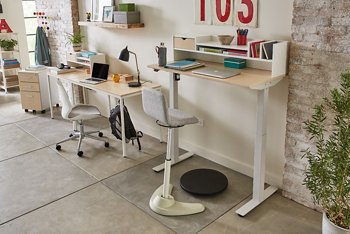
⇒ Find an affable two-person setup that creates personal space for everybody. Especially in spacious workspaces, it's worth taking a page from the corporate office playbook to create coordinating workstations that aren't unlike an open office setup. Position yourselves back-to-back to minimize noise and visual distraction and seek out furniture that creates an aesthetically cohesive environment.a
⇒ Share your schedules so you know when you'll be up against dueling meetings. Find a separate area in the home that's ideal for voice and video communication without bothering other WFH workers.
⇒ If possible, try to spread out. Set up your workstations in totally separate parts of the house to completely avoid distractions from one another, allowing everybody to maintain their unique requirements for workspace and storage.
Discourage Distractions
Distractions are here, there, and everywhere! How you handle them is the difference between a successful workday and a productivity nightmare. Each annoyance has its own set of hurdles but there's a few notorious challenges that all remote workers experience.
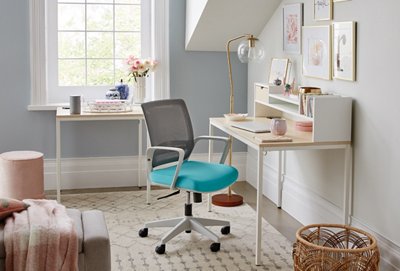
⇒ Remove visual noise, including excess clutter, dirty dishes, stacks of paper, and other easy-to-eradicate items that are crowding your workspace.
⇒ Relocate more sizable fixtures, such as TVs or video game systems that might be situated too close to your desk.
⇒ Repurpose distractions if you can't remove them. A day-at-a-glance screensaver on a smart TV can make it less appealing to turn on Netflix or a video game system can be used to play music instead of games.
And then there's your new "coworkers" at home:
⇒ Communicate your schedule and make sure that family members or roommates are aware of your worktime.
⇒ Set up a new cozy spot or play area for pets who like to make appearances during virtual meetings, ideally one that's in another room entirely.
⇒ Find a truly quiet zone, even if it's not your desk, that's behind a closed door to make it clear that you can't be disturbed.
Don't Get Too Comfortable
Figuratively? Yes, make yourself as emotionally at ease as possible. Literally? Avoid the coziest corners of your home while you're hard at work. Studies have shown that just being in a bedroom can trigger sleepiness, which is further impacted by working while sitting in bed. While it's tempting, it's a known detractor to productivity.
Sometimes it's not possible to separate a sleeping space from your workspace. If your office setup is in your bedroom, lean into sensory tools that are easy to adjust depending on the time of day. Use candles or an oil diffuser with a bright, invigorating scent during the daytime and switch them out to a calming, sleepytime scent at night. Make sure that the light source at your desk has a bright daylight-mimicking hue while other room lighting is more suitable for non-working hours.
For other parts of the home, try to have an office chair that can be swapped out for other seating at a kitchen table or countertop. This is an ergonomically-friendly solution for long hours at work but can also help your subconscious understand the difference between sitting down for dinner and getting down to business.
Here and There
Even though your home office is still your home base, many of us have to periodically make our way up to the office. To varying degrees, these split schedules are becoming more and more common. It might not be feasible to have two of everything but, at the same time, it's no fun trying to pack up your entire workstation just for a day onsite.
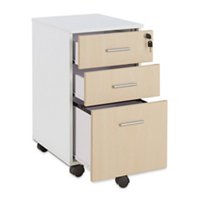 Specific Storage
Specific Storage
A smaller storage unit is a great way to keep your "back and forth" necessities together while still providing access during the work day. That way you can grab your curated essentials and be on your way without that feeling of "am I missing something?" Mobile file pedestals are a great solution thanks to out-of-the-way drawers in an easy-to-reach format.
A Couple Doubles
There's a few supplies that get a lot of use. A couple of pens, a stapler, a separate set of headphones-- it could be anything. These items are worth duplicating at the home and the office. Look at the bright side: when you're at home you can pick out fun designs or a coordinating color that wouldn't really fit in a corporate office.
Bags, Backpacks, and Briefcases
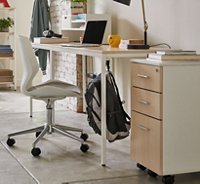
Looking for more ways to practice Workplace Wellness? Check out our free eBook to learn more!

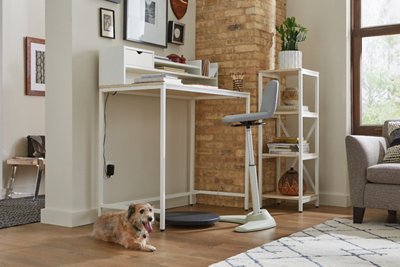
0 Comments